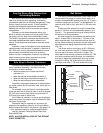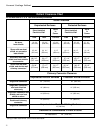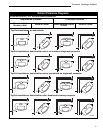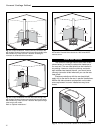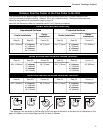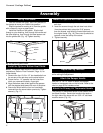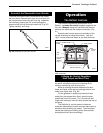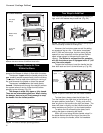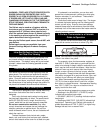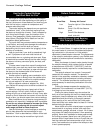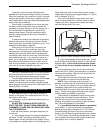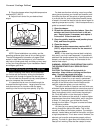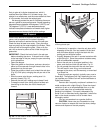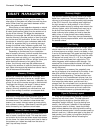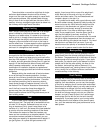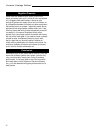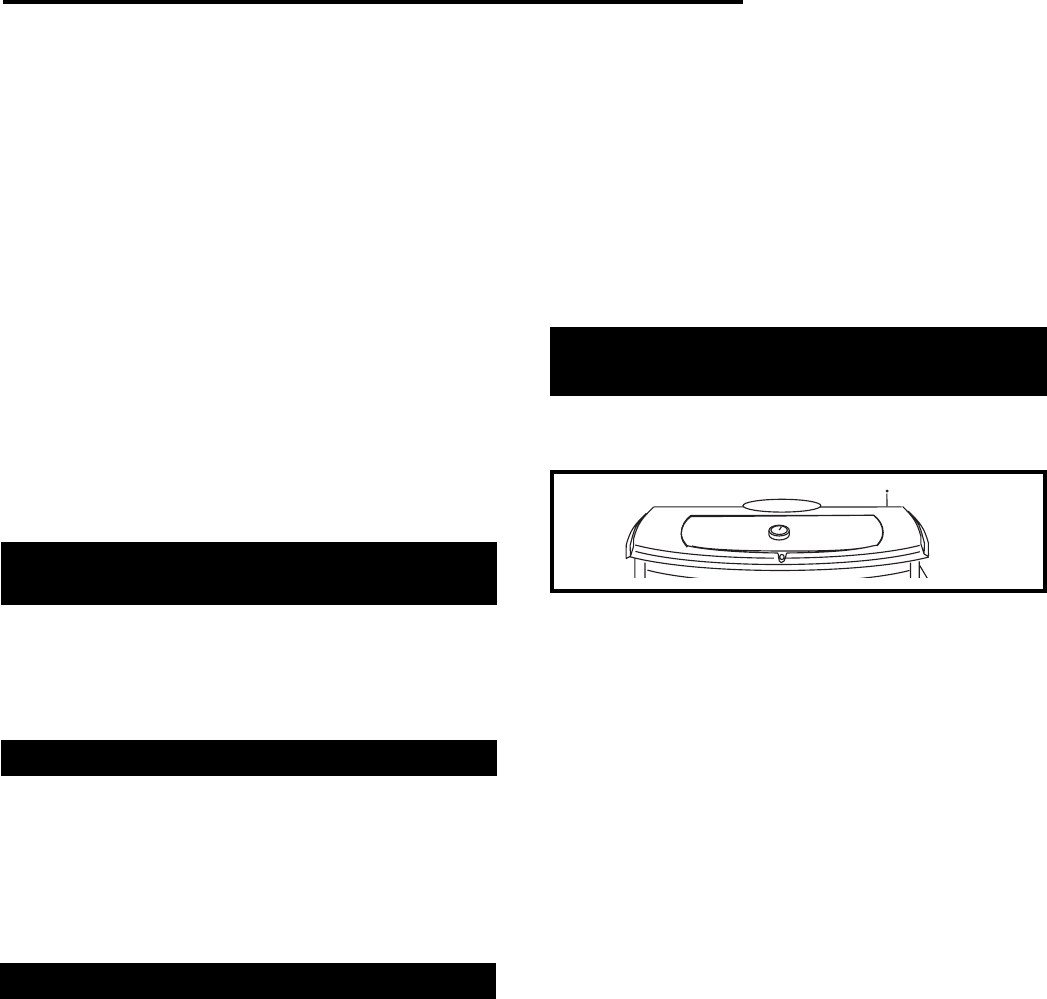
19
Vermont Castings Defiant
WARNING: FIREPLACE STOVES EQUIPPED WITH
DOORS SHOULD BE OPERATED ONLY WITH
DOORS FULLY OPEN OR DOORS FULLY CLOSED.
IF DOORS ARE LEFT PARTLY OPEN, GAS AND
FLAME MAY BE DRAWN OUT OF THE FIREPLACE
STOVE OPENING, CREATING RISKS FROM BOTH
FIRE AND SMOKE.
The Defiant may be used as a fireplace with the
front doors open or removed, BUT
only when it is
equipped with 8" (200mm) stove pipe and only
when the optional spark screen is placed correctly
in the opening
to protect against the possibility of
sparks and embers leaving your stove.
Use only the Defiant spark screen, Item #1907, with
your Defiant.
Defiant spark screens are available from your
Vermont Castings Majestic Products Company
Dealer.
Infra-Red Reflective Glass Panels
for Clear Fire Viewing
The outer surfaces of the ceramic glass panels have
an infrared-reflective coating which keeps the inner
surfaces warm. This design, along with a pre-heated
'airwash,' makes clear fire viewing possible at most
firing levels.
Andirons Help Protect the Glass
Your stove has andirons to keep logs away from the
glass panels. The andirons are essential to maintain
clear fireviewing, and should be left permanently in
place. Since the andirons may slightly hinder refueling
through the front doors, most stove owners will prefer
the convenience of top loading through the griddle. Do
not place fuel between the andirons and the doors.
Burn Only High-Quality Wood
The Defiant is designed to burn natural wood only;
do not burn fuels other than that for which it was
designed.
You’ll enjoy the best results when burning wood
that has been adequately air-dried. The wood should
be 20-22" (500-550 mm) in length. Avoid burning
“green” wood that has not been properly seasoned.
Do not burn construction materials; they often
contain chemicals and metals that can damage the
catalytic combustor or pollute the air. Do not burn
ocean driftwood; when it burns, the salt it absorbs will
attack the cast iron.
The best hardwood fuels include oak, maple,
beech, ash, and hickory that has been split, stacked,
and air-dried outside under cover for at least one year.
If hardwood is not available, you can burn soft-
woods like include tamarack, yellow pine, white pine,
Eastern red cedar, fir, and redwood. These should
also be properly dried.
Store wood under cover to keep it dry. The longer
it is stored, the better heating and fire-viewing perfor-
mance you will enjoy. Even for short-term storage,
however, keep wood a safe distance from the heater
and keep it out of the areas around the heater used for
refueling and ash removal.
A Surface Thermometer is a Valuable
Guide to Operation
An optional surface thermometer tells you when to
adjust the air control, and when to refuel. (Fig. 26)
For example, when the thermometer registers at
least 450° F. (230 C) after start-up you know that the
stove is hot enough to begin catalytic combustion and
that it
may
be time to close the damper. Note that the
stove will warm up much sooner than the chimney,
though; a warm
chimney
is the key to easy, effective
stove operation. Please review the draft management
information on pages 24 to see how the size, type, and
location of your chimney will affect your stove opera-
tion. When thermometer readings drop below 350°F.
(175˚C) it’s time to adjust the air control for a higher
burn rate or to reload the stove. A temperature reading
over 750° F. (385˚C) is a sign to cut back on the air
supply to slow the burn rate.
Use the following temperature ranges as a guide:
• Readings in the 350-500°F. (175-260˚C) range
indicate low to medium heat output.
• 500-600°F. (260-315˚C) readings indicate medium
heat output.
• Readings of 600-750°F. (315-385˚C) indicate high
heat output. Operating your Defiant continuously at
griddle temperatures of 750° F. (385˚C) or higher may
damage the cast iron or enamel finish.
ST523
Fig. 26 Take temperature readings with a thermometer
located in the middle of the griddle.



